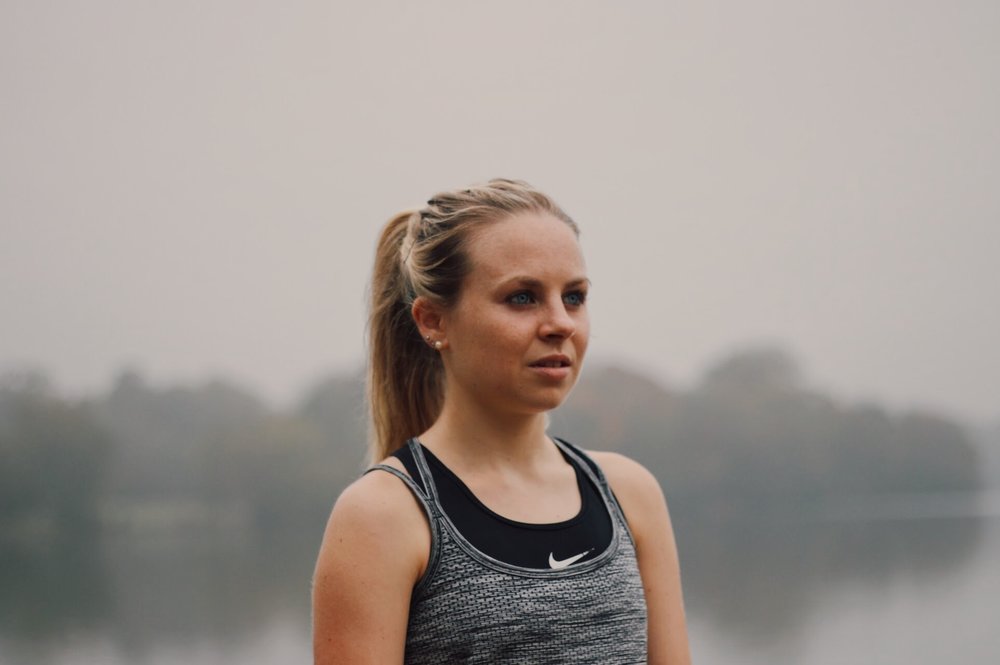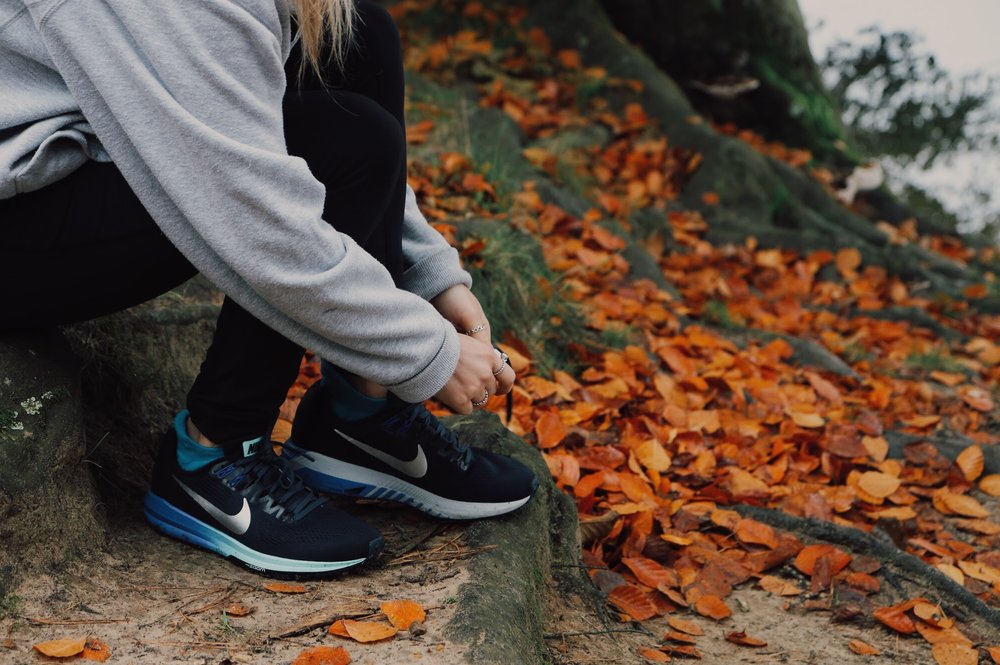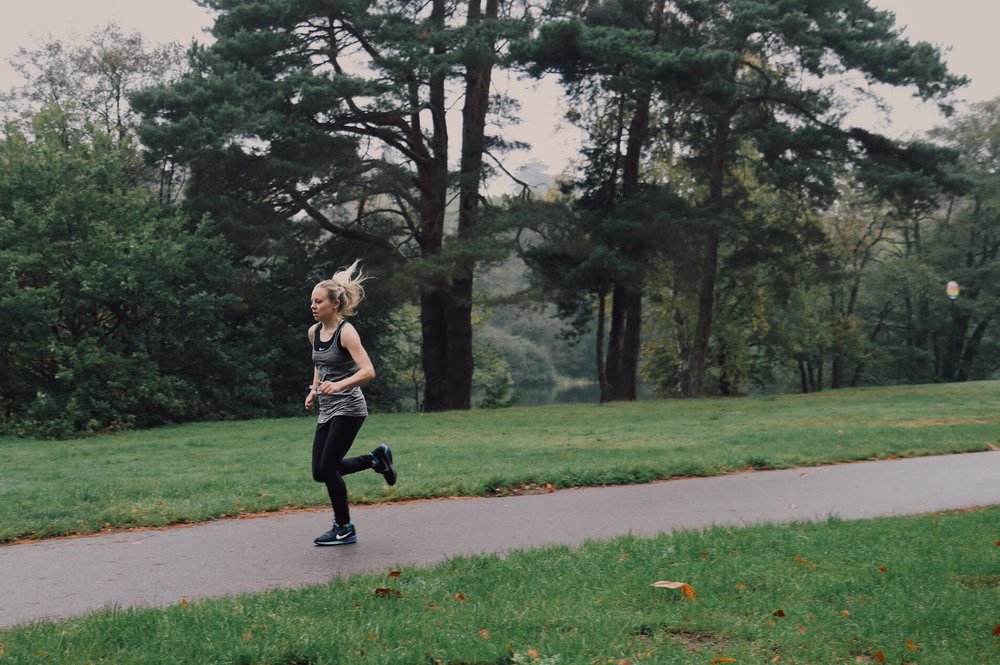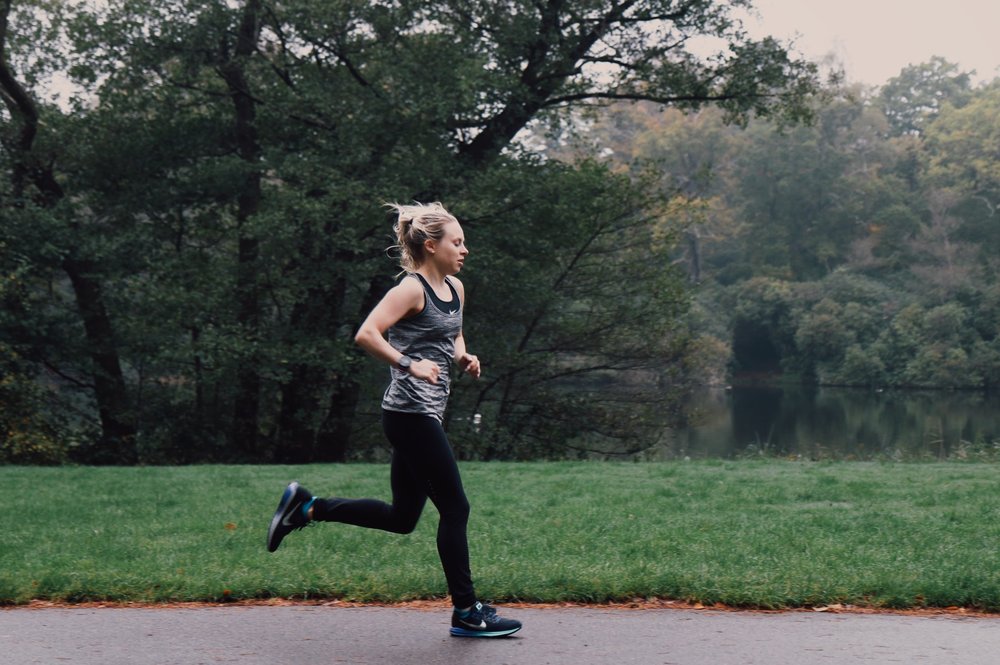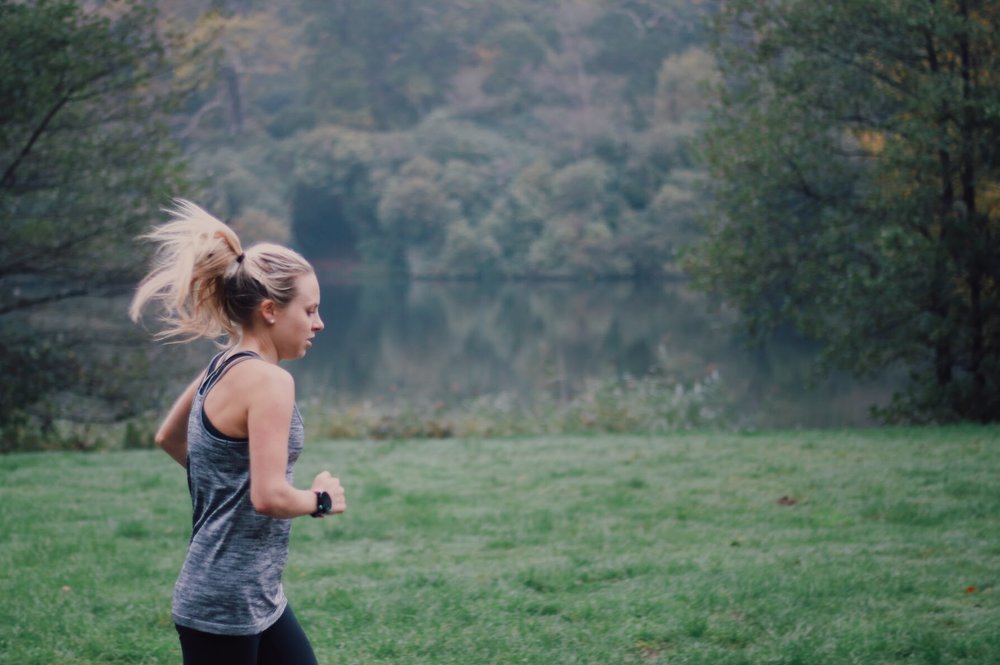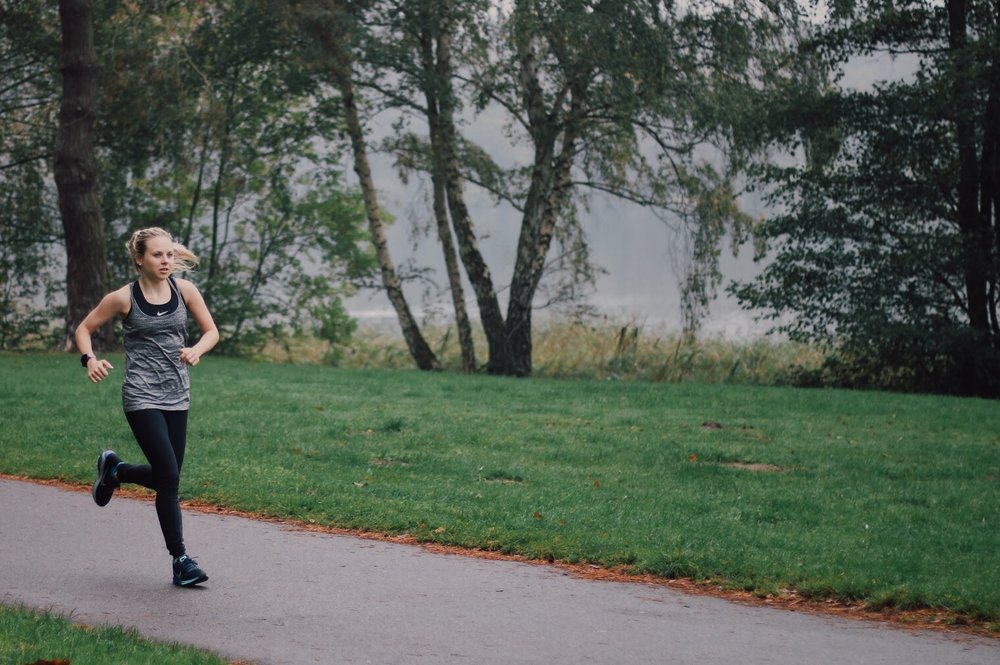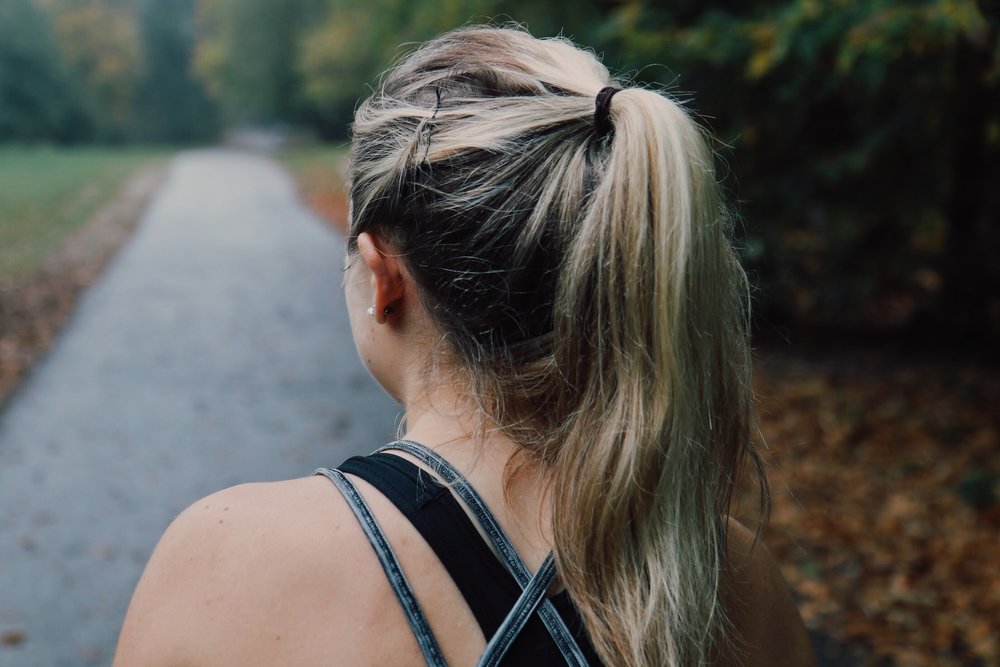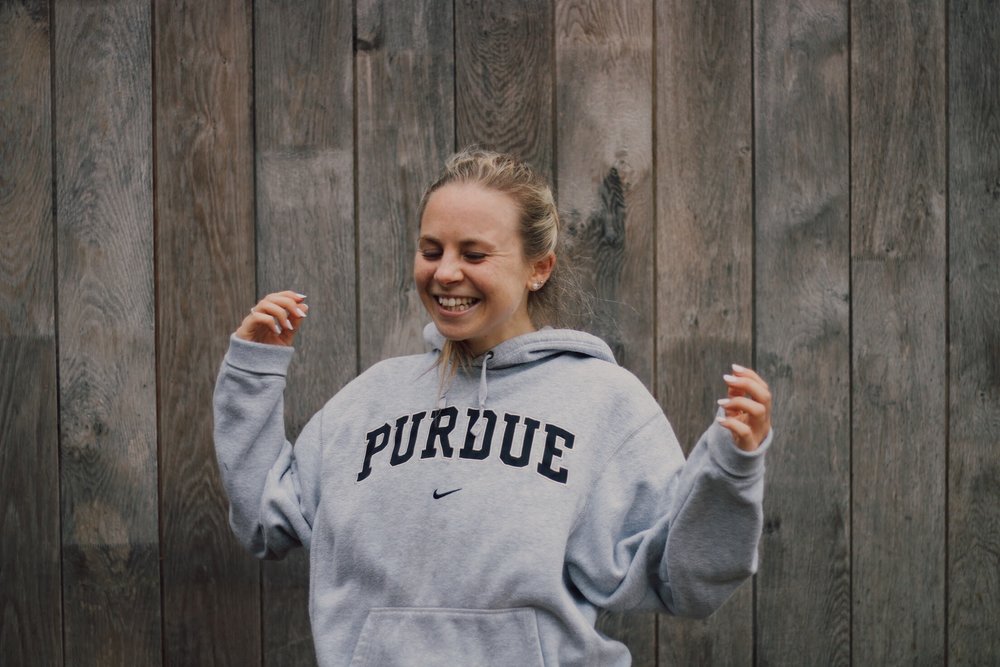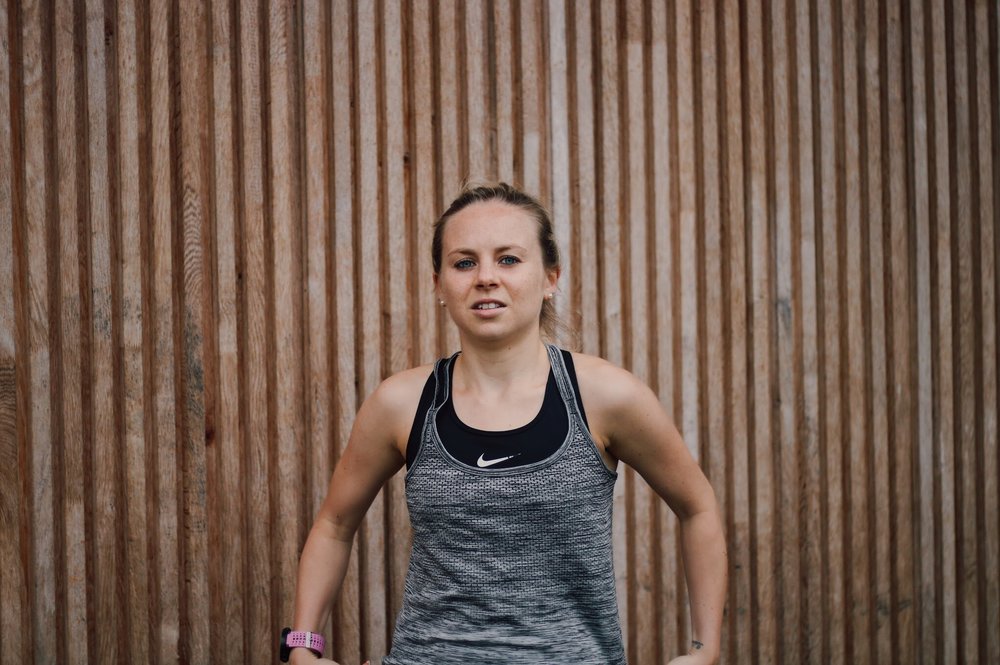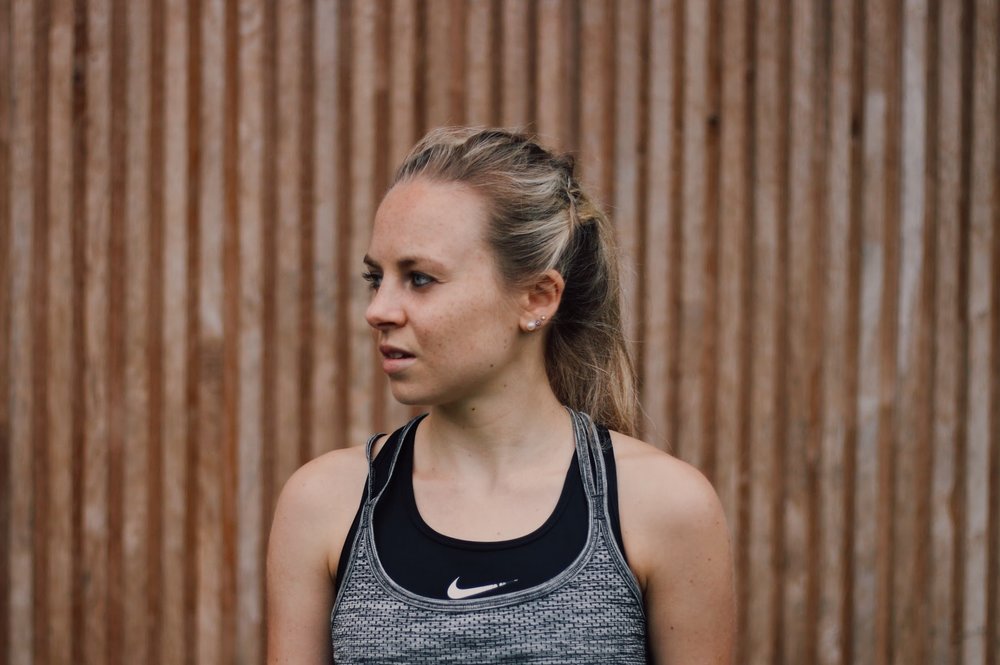Athlete Insight: Charlotte Purdue
The morning I meet Charlotte is in mid-October and, having travelled through fog and mist to get to our interview location in Surrey, it feels like a truly autumn day. I’m a little early, and I’ve been wandering around the entrance to the park for fifteen minutes when I see Charlotte coming towards me through the tall trees. She approaches beaming and sweating, telling me she has squeezed in her first training run of the day already – eight miles down and it’s only 10am. I had planned to sit down with her and chat over coffee first but she seems keen to keep moving, so we start walking and talking as we go. Despite the grumpy sky the setting is stunning, made up of a long loop around a lake that Charlotte runs almost daily, often documenting the scene on Instagram which is maybe why I feel like I’ve been here before.
Charlotte is a local girl and knows the park intimately. Born in Windsor, she grew up in Hampshire and went to university in Twickenham where she studied history at St. Mary’s. This is where she met her current coach Nick, an Australian who is based locally over the summer whilst attending races in Europe. They’ve been working together for a few years now after switching from her former coach who she’d been with since she started running. He was good, Charlotte tells me, but she’d been considering a change for a while having suffered multiple injuries in a short space of time – six stress fractures in a row – and says "that training was just not really right for me…so I changed everything."
She’s heading out to see her coach in a few weeks. I’m curious to find out how that works for Charlotte, who goes to Melbourne for months at a time to train with her group but seems very rooted in Surrey. “I always try and go January to March”, she says, “just because obviously the weather is shit here, and I don’t really have anyone to train with except [my boyfriend] Adam because my whole group is Australian. They’re all based there so when I’m here I do a lot of stuff alone.” She stays in constant touch with her teammates on the other side of the world, and is mostly coached how I imagine every elite runner in their 20s would be – via WhatsApp. When she’s back at home, she sometimes runs with her boyfriend, who is her running partner this morning, and there’s her good friend Steve, but both work full-time jobs meaning in the milder months they end up running in the dark and Charlotte has to wait around all day. She says she loves being down under, being able to run in shorts and not worry about the weather, but she always comes home for Christmas, sometimes stopping in Japan to do a race on the way home. At 7am on Christmas morning you’ll find her doing the lap of the lake we’re walking now.
I tend to think that sport is either a part of your story growing up or not. For Charlotte, she says “literally no one in my family loves running. My mum and dad do jet-skiing as their sport. My brother doesn’t do any sport. We did swimming and tennis growing up but never anything serious.” So… how did she become an elite marathon runner? It was at school – each class had to choose two people to do cross country for the year and her friend nominated her. After doing it for fun for a year, Charlotte discovered she was actually pretty in to it and signed up again for the next year. It was at a cross country competition she attended with school where Charlotte met her first coach. Were there any other sports that she felt like she might want to pursue? “I was pretty rubbish at everything” she says, and I tell her I’m pretty certain our definition of rubbish would be different. “Well… not rubbish”, she concedes, “I did swimming and ballet. I would always get the highest grade in my dance exams but I didn’t pursue it. I did swimming and hockey but I was in the C team, so running was a much more natural fit.”
Was it just as natural to think that this would be her career? Like many young athletes, Charlotte didn’t think running could be her job, and she grew up wanting “to be a vet, and then a lawyer because I was obsessed with Legally Blonde – I used to watch it every weekend!” The ability of many female athletes to juggle work and training, a necessary sometimes even at elite level as there is not enough money for a full-time salary, is impressive. As a marathon runner, you make most of your earnings through race winnings and appearances, but she’s also sponsored by Nike, who she’s been with for a decade. In Charlotte’s case, it seems as though the opportunity to get paid as a runner came pretty early on, having “been a full time athlete pretty much since I left Uni. I did do some work – I worked as a personal trainer and as a pilates instructor, but that was part-time so the rest of the time I would run, I would just fit it around work. I had two years where I was injured a lot so I just wasn’t making any money and had to work as a nanny; I looked after kids after school every day from 3 until 6 and would do my training before and after. But the last two years I have been doing marathons and I have to do it all the time because marathons are a lot – I run 15 miles a day and I need to rest in between.”
“You can tell I’m a marathon runner now because sometimes it feels awful until after an hour.”
Having not ever run a marathon myself, I imagine it must take a certain mind-set to be able to run such distances, and I’m keen to get any insight in how Charlotte might encourage this. “I don’t really have a way to get in to it, I don’t listen to music, I just get started” she says. It sounds innate, and on some days when she gets home Adam will ask her where she’s been and she can’t tell him. What I’d imagined as almost transcendental in fact sounds almost mundane, “I think about what I have got to do in the day and random stuff like what am I having for dinner”. When you start running, I ask, do you naturally slip into this way of being? Not so much. “I always feel rubbish for the first two miles – you can tell I’m a marathon runner now because sometimes it feels awful until after an hour. I feel sluggish until I’m an hour into it and feel warmed up and good to go. I look at my watch and I’m at 1:05.” It’s quite comforting to know that even elite athletes experience this slowness in training, and I make a note to self not to be so hard on my legs when they won’t wake up on my next run.
So what does a training week look like for a long-distance athlete? Most days consist of a morning run of 8-10 miles, followed by a second run at an easier pace of around 5 miles. “I usually do the big one in the morning and then the 5 mile easy in the afternoon. I don’t train twice every day, usually 5 out of 7. On Sunday I do a 2 hour 15 run, and then nothing in the afternoon. I try to fit in the gym twice a week and leave a day in between. And I try not to do it on a huge day as I am way too tired to put effort in. Today was easy, I was just getting it done really. It was about 6’50 per mile, which is pretty easy for me – marathon pace is 5’40 per mile. All the proper hard sessions I do are 5’40 marathon pace, some faster, but usually about that.”
Essentially, a LOT of running. This changes throughout the year depending on her races, but it’s always a lot of running. “Before the London marathon [April 2017], I was doing training sessions that were two hours long, whereas now they are half an hour long. Now I’m trying to work on getting faster and speed work, whereas before the race I was doing all long stuff. I was doing 120 miles a week but now I am doing about 90. It is nice not to hammer up the miles all the time!” I’m struggling to see how much lighter a training load 30 miles less could be at that level, but she assures me those miles make all the difference. What does it take to recover from doing these distances week in, week out? “If I have a really hard training session I try to go in the ice bath. But when it is really cold I don’t think there’s much benefit because you just get cold and have to go in a hot bath. Also, sleeping. I go to bed really early when I’m hard training, at 9:30. I won’t wake up ‘til 9am, so a solid sleep, and then I do my first run a bit later. Easy days are the best; I do a hard training session and then I have two easy days before the next hard day so I recover quite well.”
Charlotte’s first marathon was London 2016. Despite not knowing what to expect, it went well. She placed 16th, running a 2:32:48. She tells me that the first 20 miles felt easy, and the last six pretty hard. How do you get through those last miles when they’re a struggle? “Just trying to get to the next mile, breaking it down. Every three miles we get drinks, so I am usually thinking about getting to the next drink and then the next mile.” London 2016 also happened to be an Olympic qualifying run, which Charlotte missed out on by 1 minute and 49 seconds. I ask her about that experience, running your first elite marathon and being so close to Rio but not making it. “It was disappointing but it was also my first one. If I made the team it would have been an outstanding run, but still it was OK and that was the worst experience I had - I didn’t get to go to the Olympics. Because it was my first one, I didn’t know if I would run it in three hours or what. I obviously knew what I was targeting but it was very hit and miss, so I was really happy to actually get round. Even though I was crying at the end because I hadn’t made the team I was really happy.” Following London 2016, Charlotte ran in the Frankfurt marathon running a 2:30:04 and this year ran her PB in London in 2:29:23.
As we near the park café where we started nearly two hours ago, Charlotte pulls on her hoody over her goose bumped arms, PURDUE emblazoned across the front, and I ask Charlotte about what’s next for her. This afternoon she’s travelling to Portsmouth for the Great South Run, a ten-miler in which she ends up placing third in 00:55:43. This is one of Charlotte’s ‘for fun’ runs, races she competes in between bigger goals and distances. At 26, Charlotte is young for a marathon runner. I ask her if this helps with her ambitions, not feeling such a time pressure to achieve things immediately. “I feel like I have got a lot of time, a lot more time than some of the others, which is good but also I don’t want to do too many marathons all at once. If I did two a year now until I’m 38, which is how old some of the other girls are, that’s a lot! So I would like to have a break in the middle and go back to 10k or something. It’s just fitting it in. Obviously when its going well you don’t want to just give it up.” She sounds pretty chill, but she’s always thinking about that next goal and has achieved a huge amount in a short time as a marathon runner. But she’s very clear about where her sights lie: “I want to make an Olympics. That’s my main aim and I haven’t done that yet. I’ve been to the Commonwealth, World Champs, European Champs, everything else. But once I’ve made the Olympics, I will feel like that’s a relief”, leaving me in no doubt we’ll see a first place Purdue finish before Tokyo 2020.

